The top image is the silver-gilt icon cover created by Tsar Boris Godunov in 1600 for Rublev's icon of the Holy Trinity which is seen below it. This gives you an idea of what icons were like in Hagia Sophia. Silver-gilt is much cheaper than gold and has the same impact. Plus it doesn't tarnish like silver does. The Tsar redid a cover that had originally been added by Tsar Ivan the Terrible, The pretty jeweled necklaces are called tsatas and they were added in 1626 by Tsar Mikhail Romanov. The golden clothing was added in the 18th century. You can visit my page on the History of the Virgin of Vladimir to learn more about its golden cover which you can see above in this column.
This icon is no longer what Rublev painted, his original icon was painted over in later years and was brutally restored in the Soviet era. The paint layers have been stripped away to reveal what remains of Rublev's work and in doing so it has created a new icon in the modern taste of the early 20th century.
The icon of the Trinity - a huge icon (56 in × 45 in) otherwise known as the Hospitality of Abraham - shows three angels that appeared to him at the oak of Mamre. It was painted by Rublev around 1411. The Trinity is currently on display in the Tretyakov Gallery in Moscow. I copied this full-sized for a California church in the 1970's. It was impossible to replicate the damaged state of the original so I used a light base color underneath the two outside angels. The one in the center - which represents Christ - was much easier to do because He had more of the original paint.
It is not commonly known that Andrei Rublev painted icons on Mount Athos and in Constantinople. You will see an image of the famous Archangel Michael painted by Rublev, which is badly damaged. I have restored it so the damage doesn't distract from the beautiful face. I have copied this icon a few times and have it in a huge Neo-Slavic kiot I built years ago. There are two angels on either side of a Theotokos and Christ Child and there are long inscriptions in slavonic. It still hangs on a wall in my house. It is huge and heavy, I always worry it is going to fall off the wall someday. I also worry that someone is going to correct the Slavonic. It was the last icon I painted in San Francisco before I moved to Austin in 1992. Many years ago I did an icon of the blue Theotokos from the nave of the Chora for the exile church in San Francisco. I did many icons for them, I wonder if they are still there. When the priest came to collect it he told me how beautiful it was but I had made a mistake in copying a slavonic hymn - only one word - since I can't read slavonic I was very lucky there was only one word. I taught myself how to do that beautiful Russian script that originated in the 16th century.
Below the Trinity icon are two views of the famous, 14th century image of the general of the Angelic host, Michael - the Grand Taxiarch, who is depicted in a frontal pose, looking directly at the viewer. In his right hand he holds a sceptre, while in his left he has a transparent glass disk, with a cross on the top and the gold initials Χ Δ Κ (for Christ [Χρίστος] Just [Δίκαιος] Judge [Κριτής]) in the center together with a depiction of a lion. His brown wings have lots of finely drawn feathers. This icon is in the Byzantine and Christian Museum in Athens. I have copied this icon many times. If one compares the wings and face of this icon with the huge Seraphim in the nave of Hagia Sophia, then it is possible that this icon is much later - from the early 1400's.
Below it you can see a Cretan icon of Michael at war with Satan for the salvation of a human soul which he holds in his hand and directs to heaven.
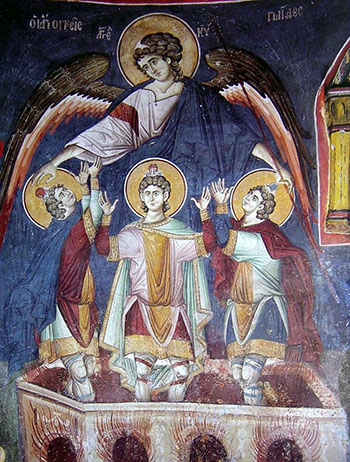 There are two images of an angel protecting the Three Hebrews in the Fiery Furnace to the left. The top one is from the Menologian of Basil II. The fresco above is from Vatopedi Monastery on Mount Athos. There was a famous miracle play which was performed in Hagia Sophia annually to celebrate this event. It was an amazing production with angels flying through the air and music. The following is the hymn associated with the miracle play:
There are two images of an angel protecting the Three Hebrews in the Fiery Furnace to the left. The top one is from the Menologian of Basil II. The fresco above is from Vatopedi Monastery on Mount Athos. There was a famous miracle play which was performed in Hagia Sophia annually to celebrate this event. It was an amazing production with angels flying through the air and music. The following is the hymn associated with the miracle play:
But the angel descended from Heaven to those with Azariah
And aroused them to song, saying
“Holy children, hear what I say:
I do what was ordered; you do what you were taught
While I rein in the fire, you brace up the tongue;
While I dim the blazing, you sharpen the singing.
Fear nothing, the fire won’t trouble you . . .
The last two icons show the famous Miracle of the Archangel Michael in Chonai. I have copied the most famous icon of the miracle, the bottom one, a few times. The figure of the angel is very classical, quite beautiful and is wonderful to paint. I tried to reproduce it freehand, but could not get the drawing right, so I copied it directly from a photo-copy. In the 70's and 80's I used to carve my own icon panels from wood like cherry. I tried to use maple but it was SO hard to carve and the panels were heavy. My hands were all scarred from working the wood with carving chisels. I lost the tip of one of my fingers. Pine actually can be used and is quite light. Pine has to be fully dried and the sap removed from it. Most Russian icons were made of pine. They also used alder and cypress.
I still have the first copy I did of that icon. I used to think i was saving money by making my own panels, but that turned out not to be true. Pre-made icon panels can be very expensive, but they can come primed with gesso which saves lots of time.
All of these angels are Archangels, I plan to do another page of images of Seraphim and Cherubim soon.

I have a number of pages in the site regarding angels:
Angels from the Kokkinobaphos Homilies on the Life of Mary
Byzantine Mosaics of Angels from Sicily
Church of the Archangel Michael - the Archistrategos - in Chonai
The Seraphim Mosaic in Hagia Sophia
Hagia Sophia - The Archangels in the Bema Vault
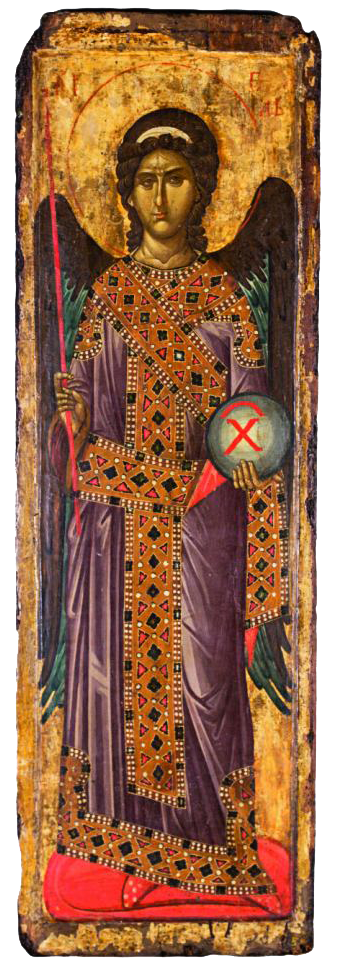 A close-up of this icon's face can be seen on the right. It's the the Archangel Gabriel, a 14th century icon in the Decani Monastery, Metohija. I copied this icon once - it was one of the first icons I water-gilded. I still have it. I learned to water-gild by reading old painters manuals-books - it was a nightmare. I had both agate burnishers and wolf's teeth to polish it. I wasted so much gold!
A close-up of this icon's face can be seen on the right. It's the the Archangel Gabriel, a 14th century icon in the Decani Monastery, Metohija. I copied this icon once - it was one of the first icons I water-gilded. I still have it. I learned to water-gild by reading old painters manuals-books - it was a nightmare. I had both agate burnishers and wolf's teeth to polish it. I wasted so much gold!
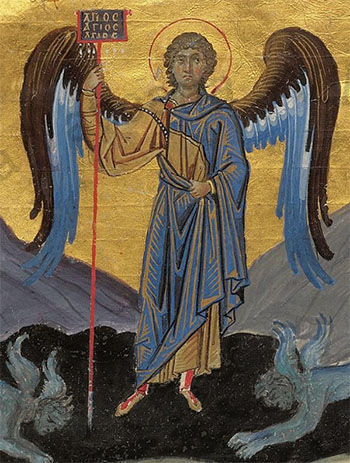

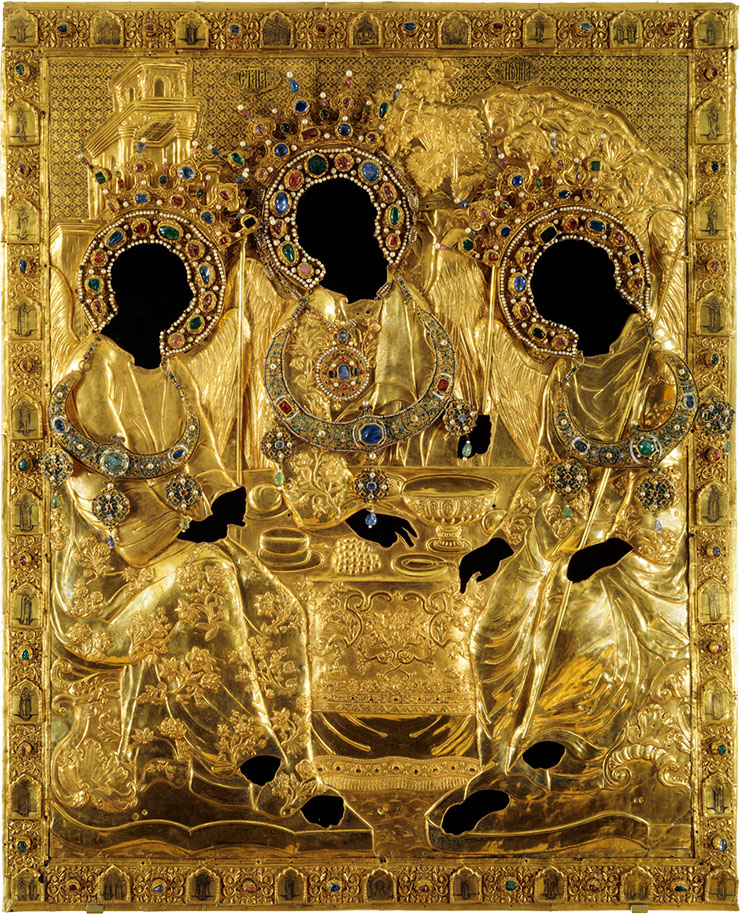
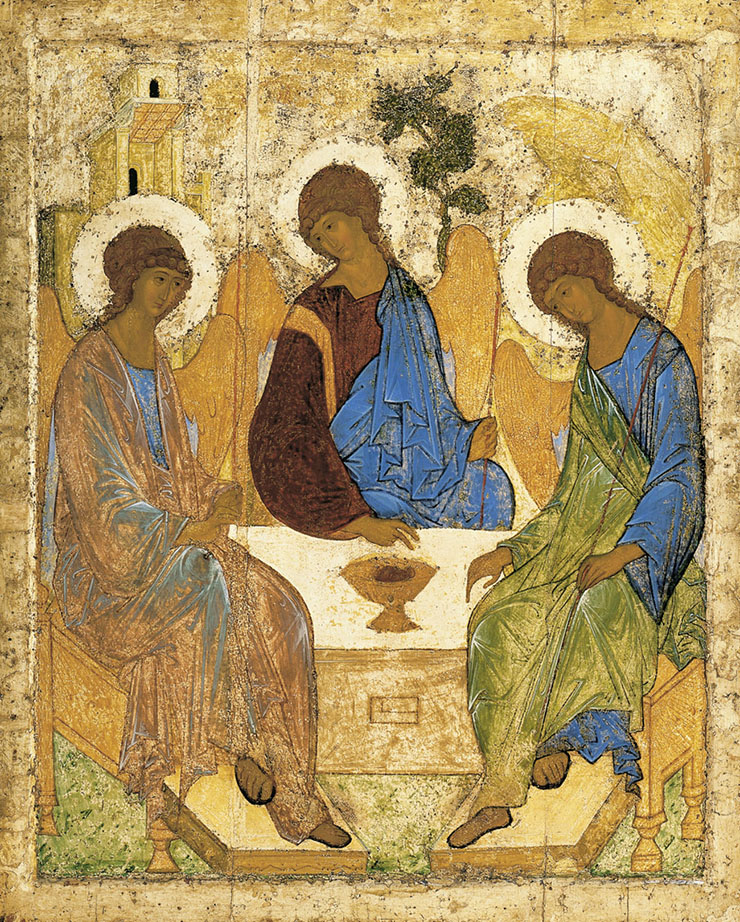
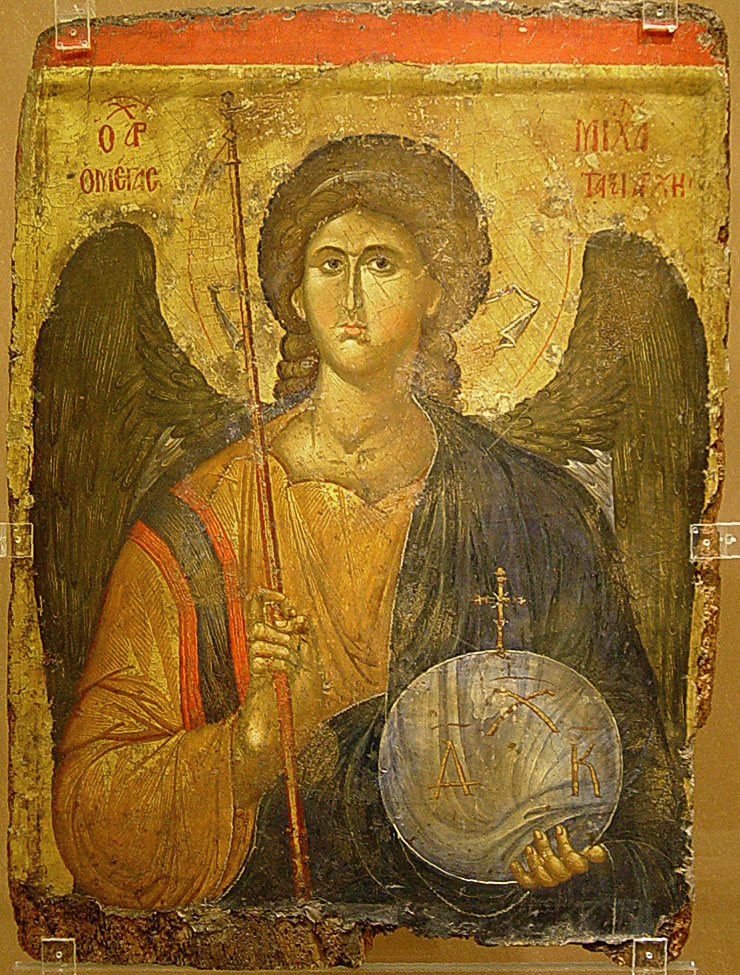
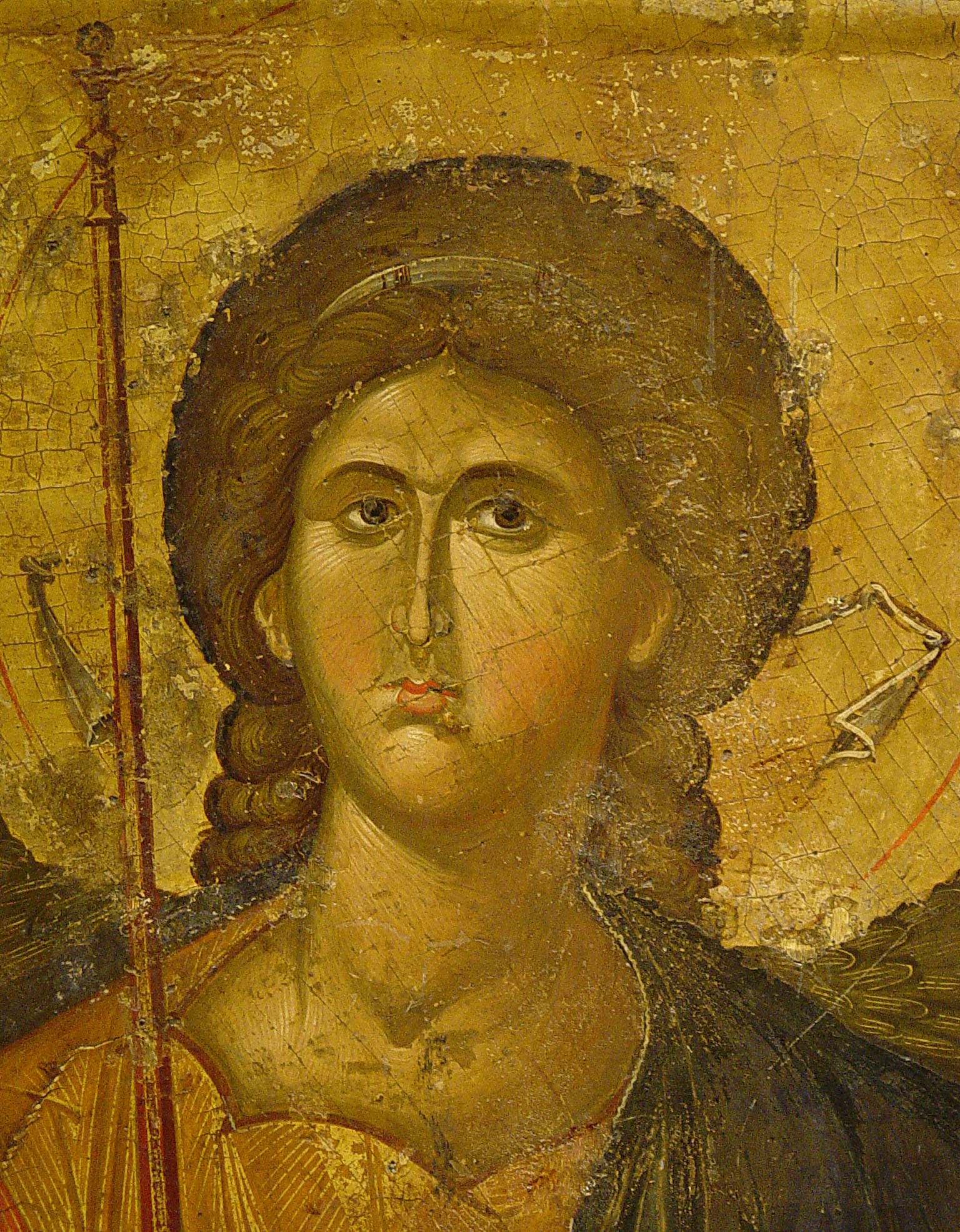
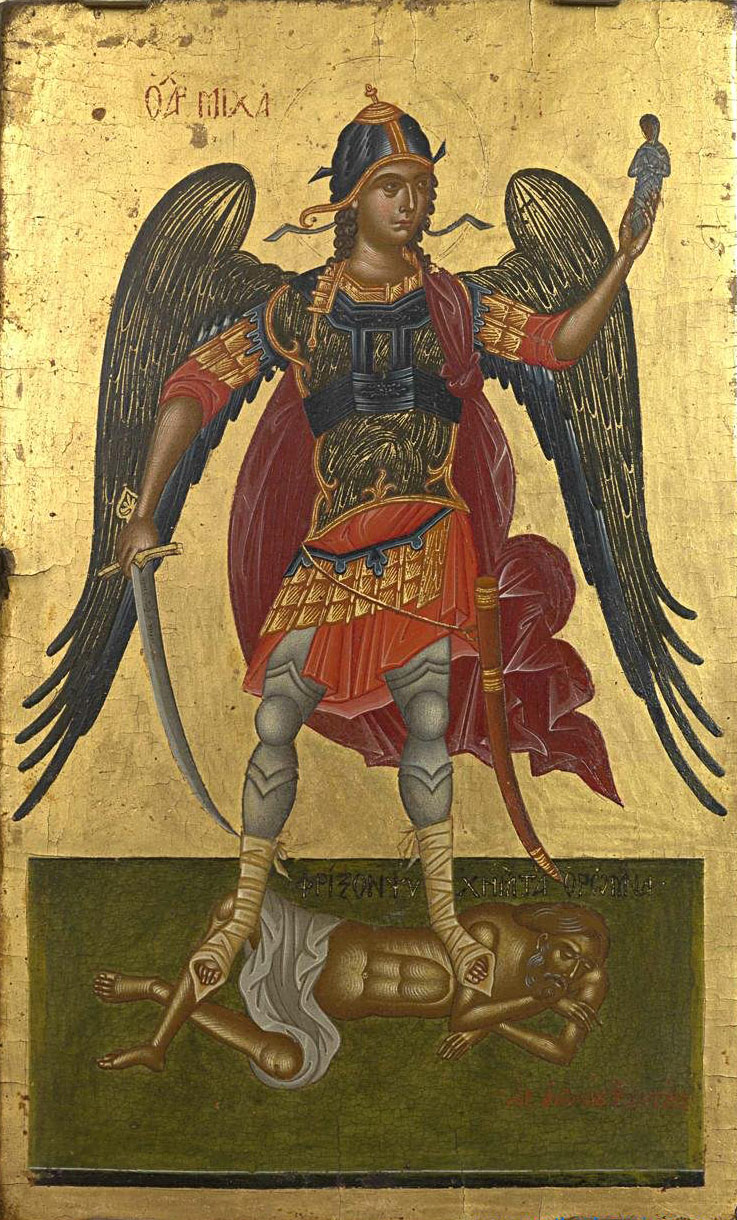
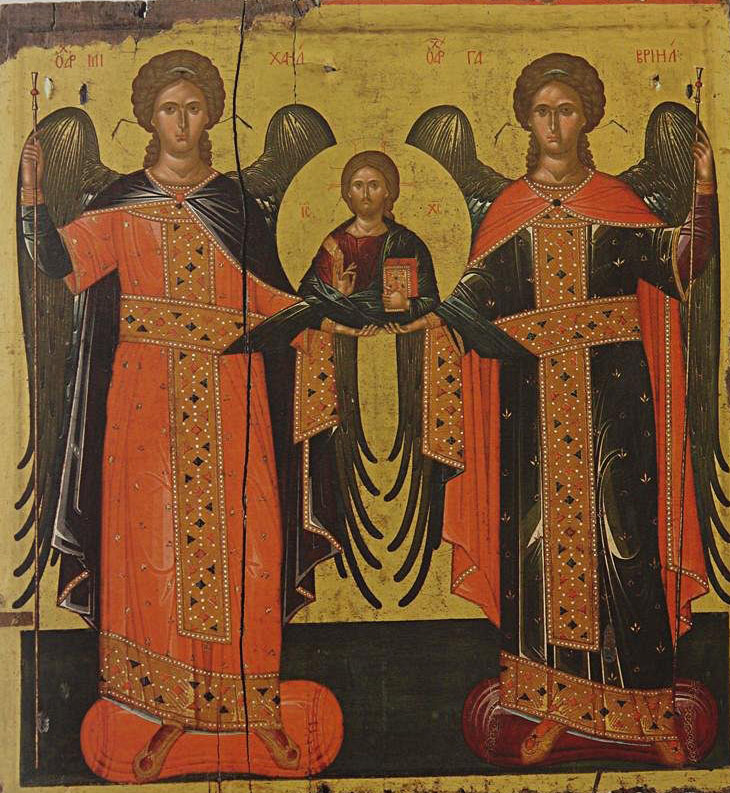
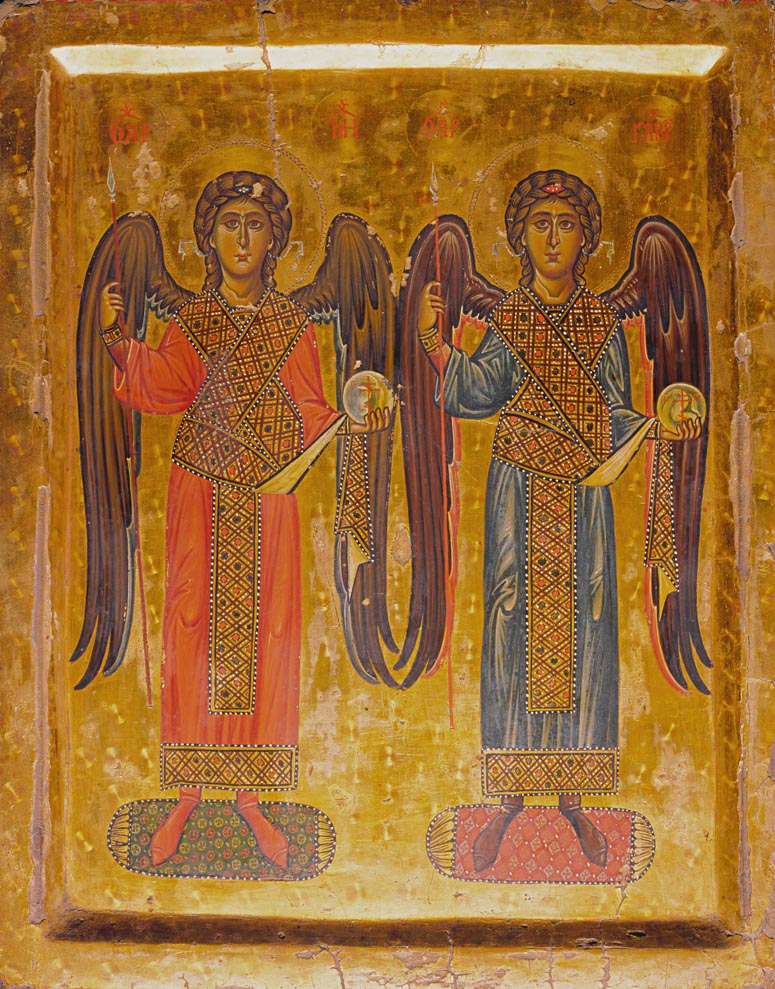
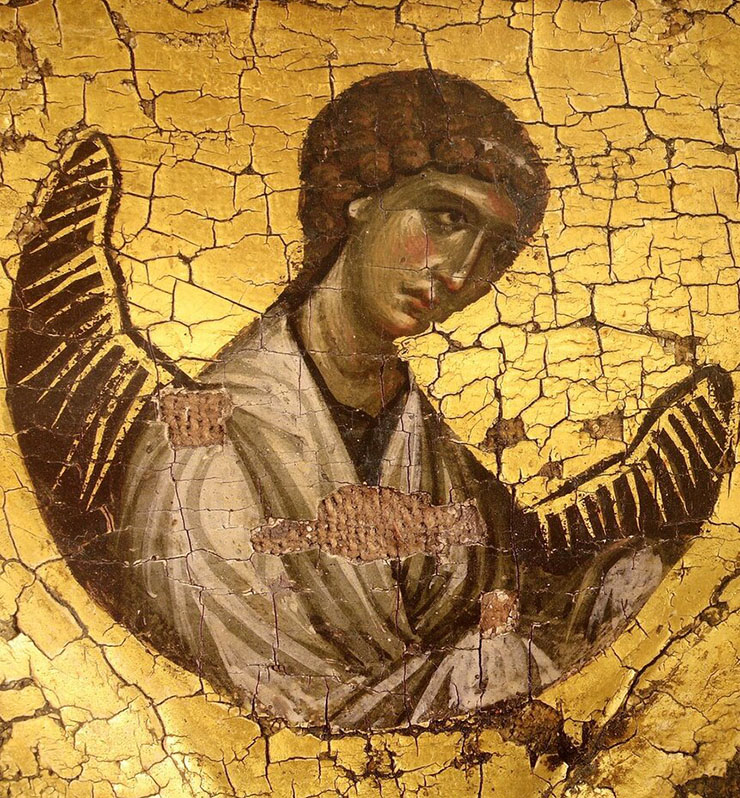
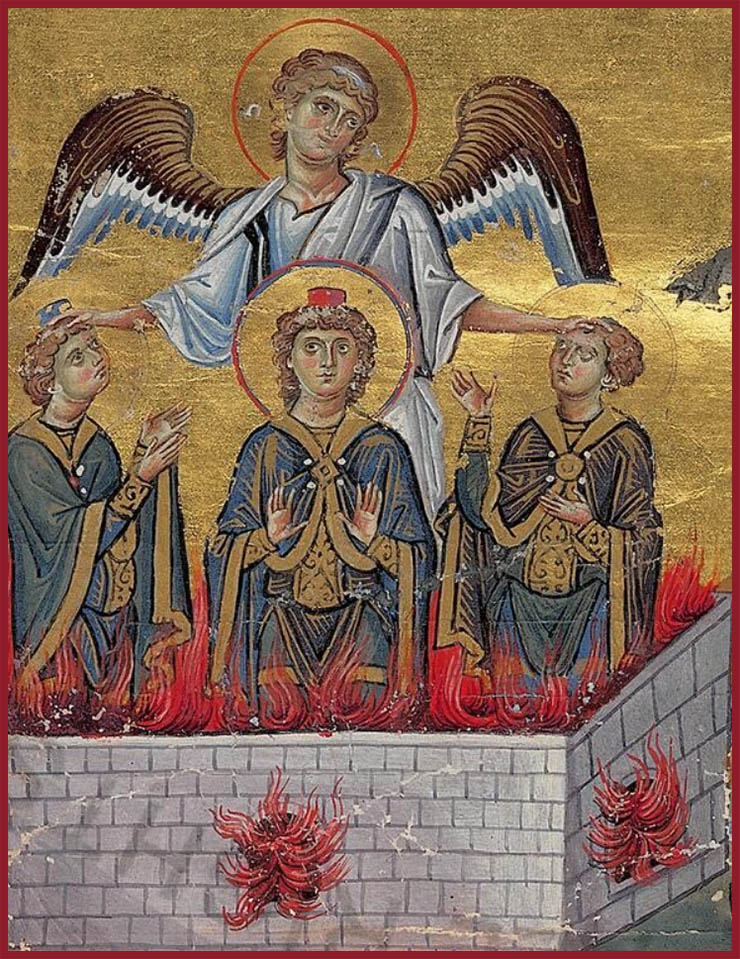
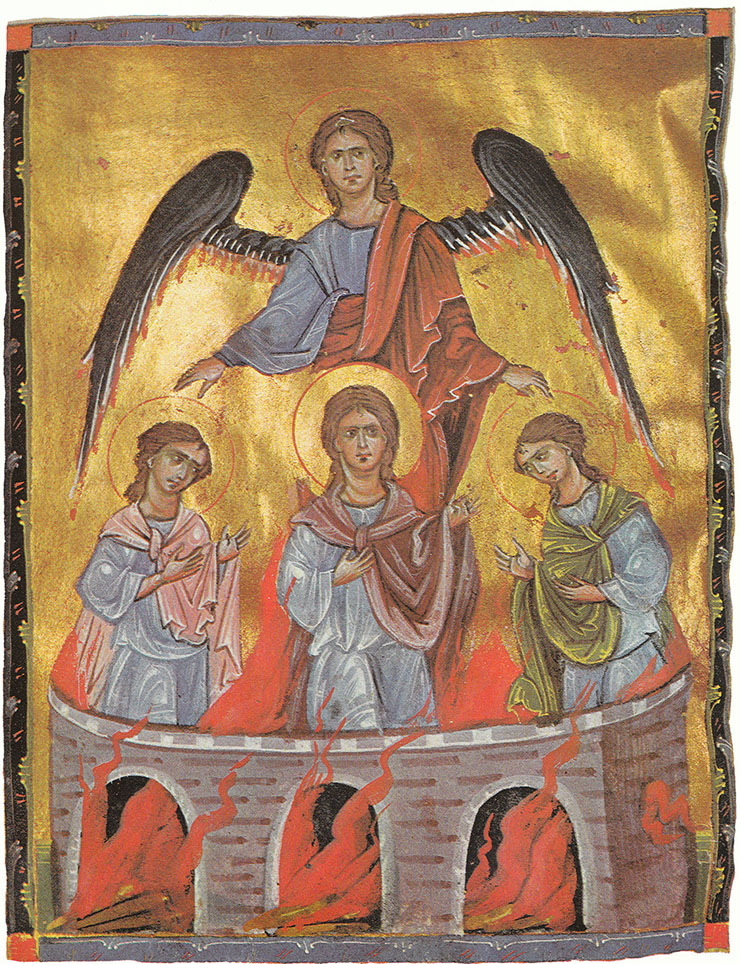
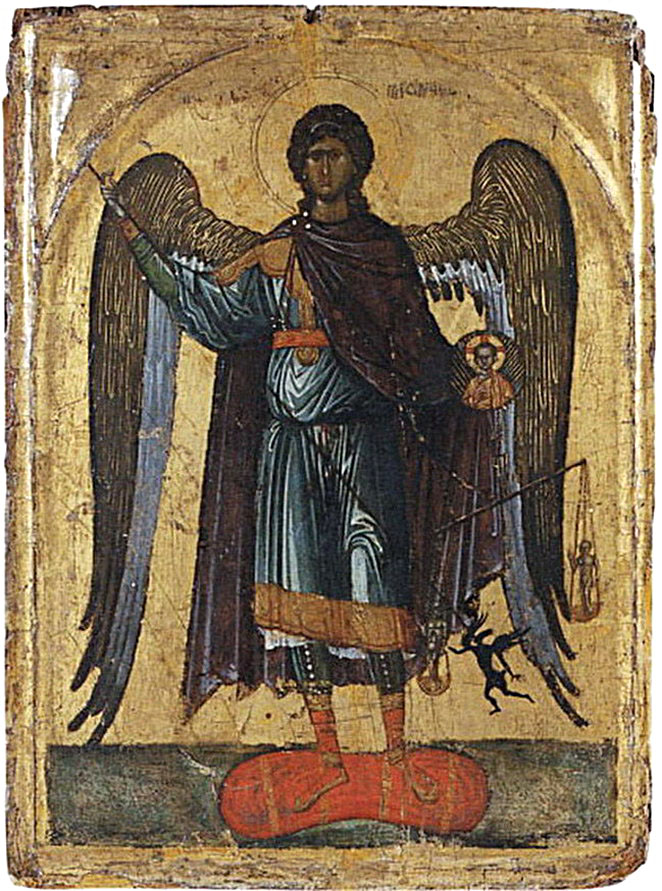
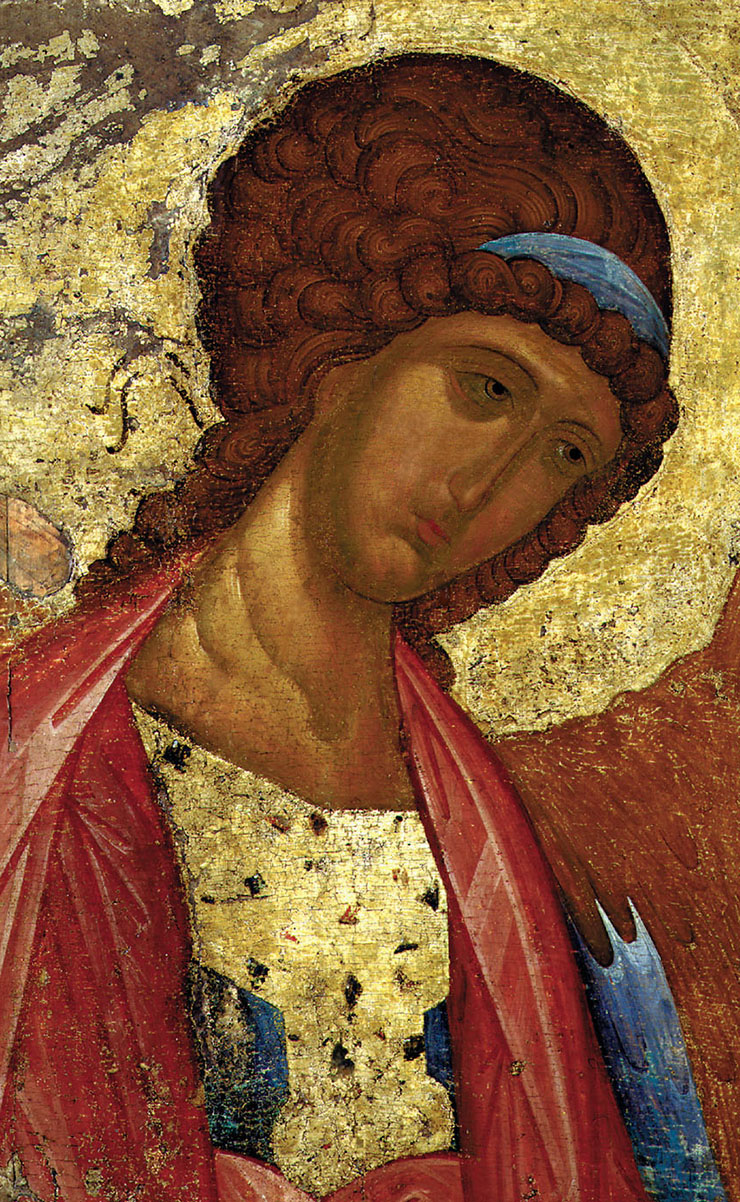
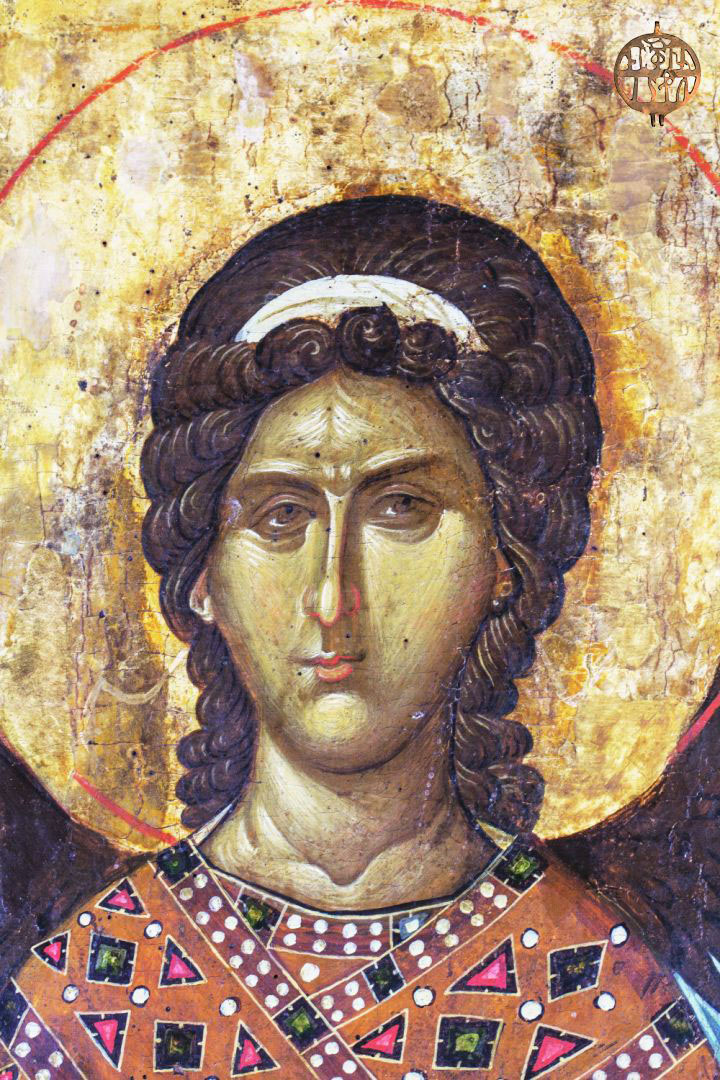
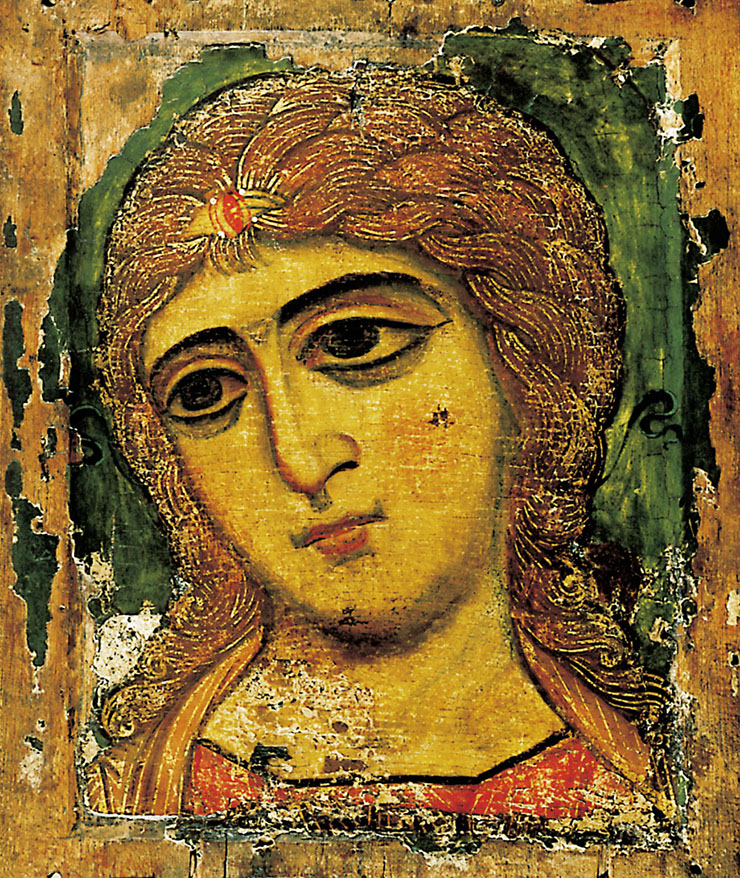
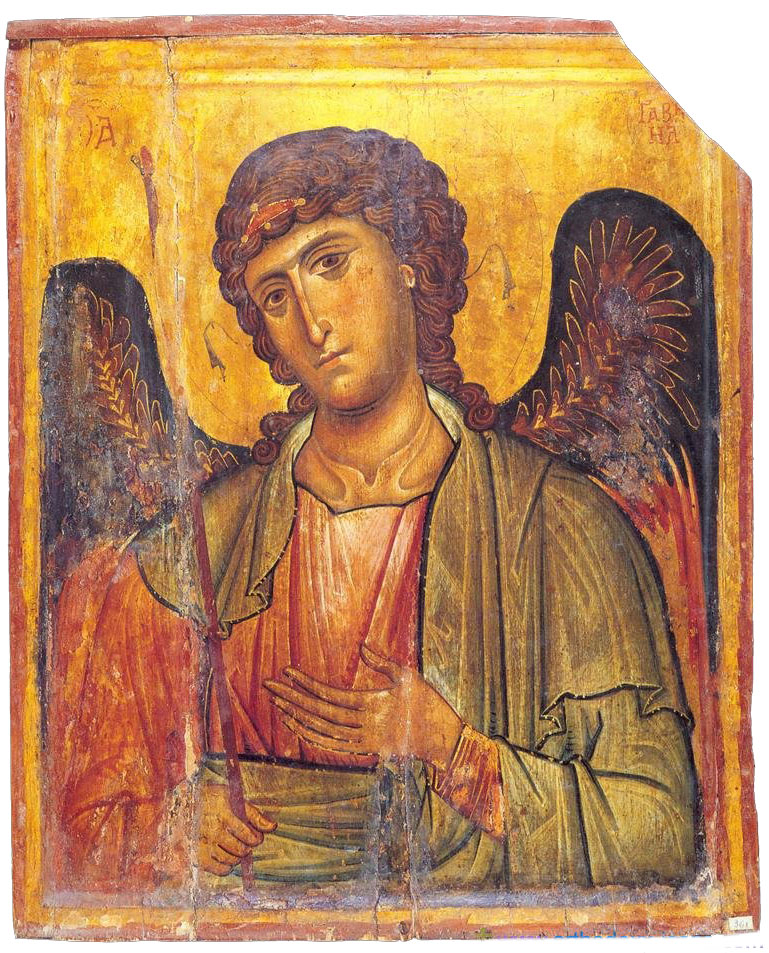
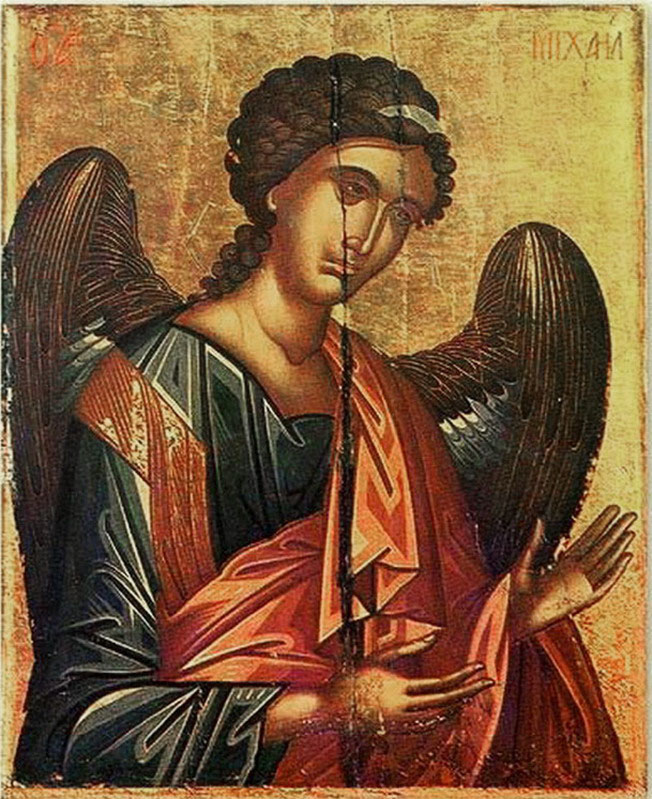
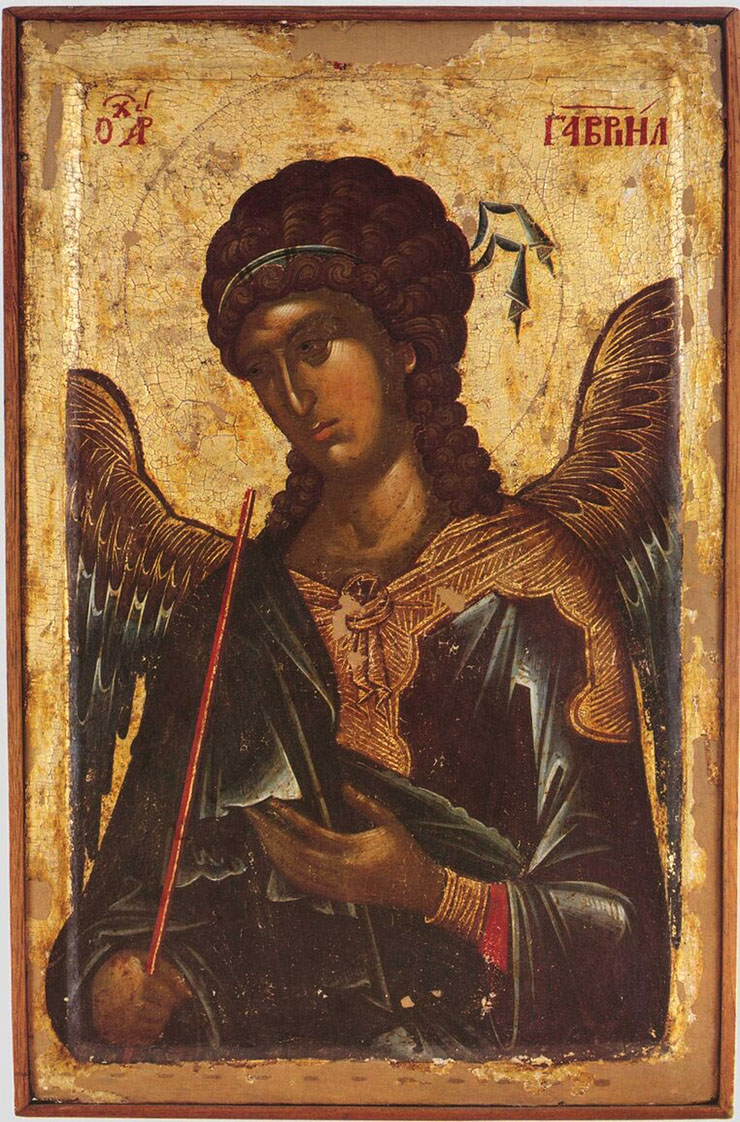
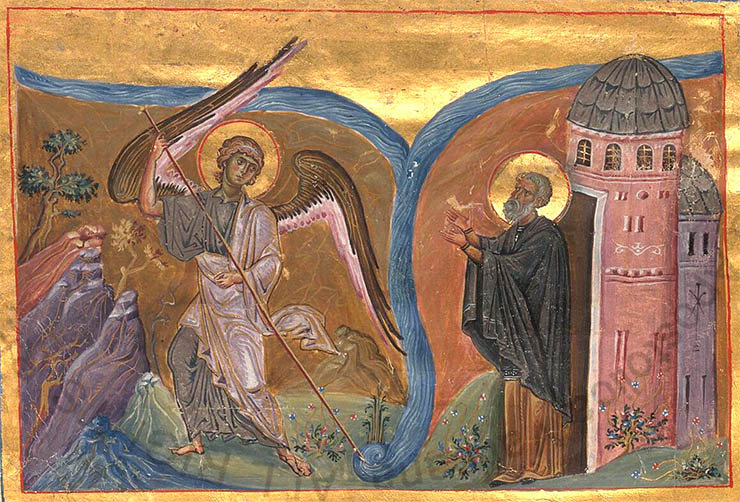
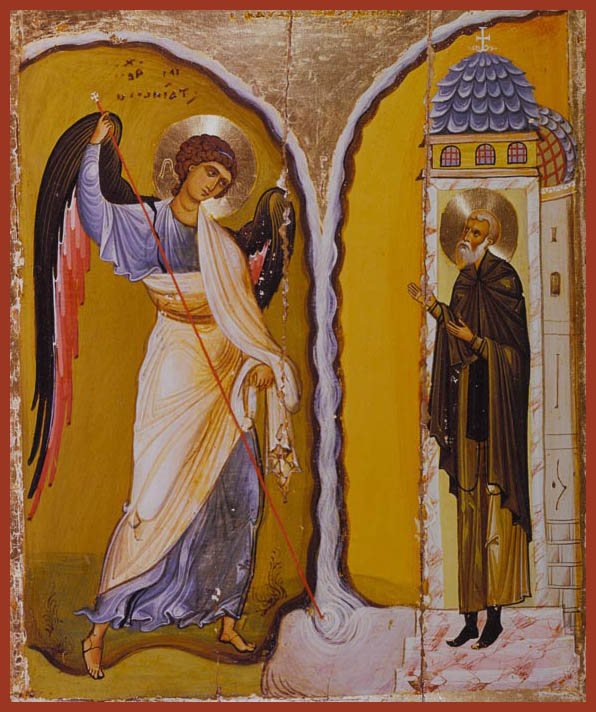


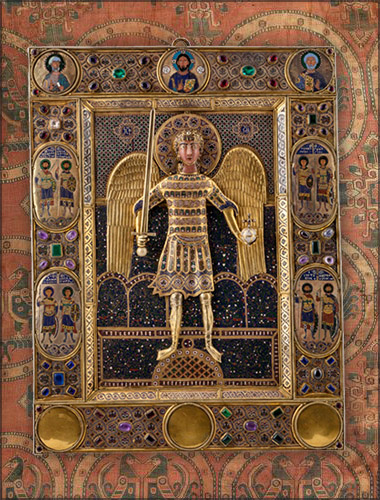

 click here for icons of christ
click here for icons of christ click here for icons of the theotokos
click here for icons of the theotokos click here for icons of angels
click here for icons of angels click here for icons of saints
click here for icons of saints








